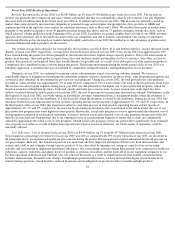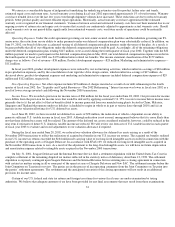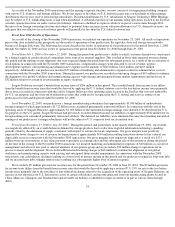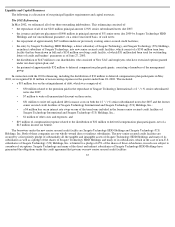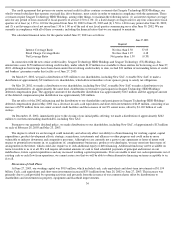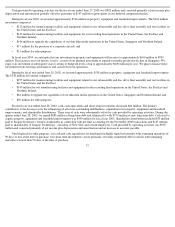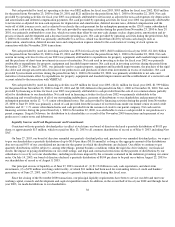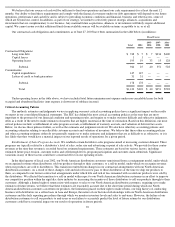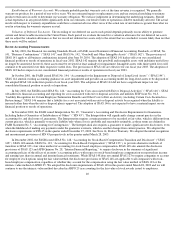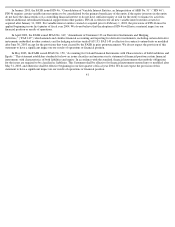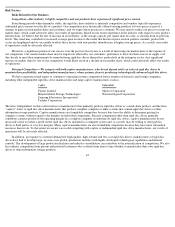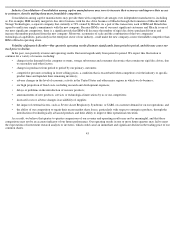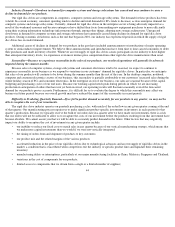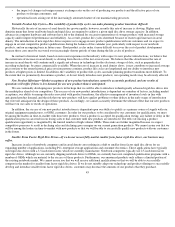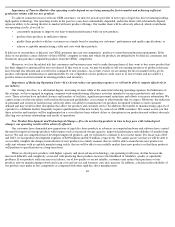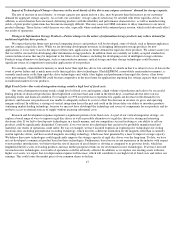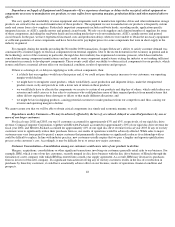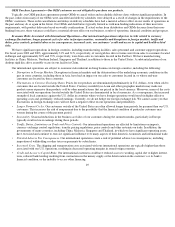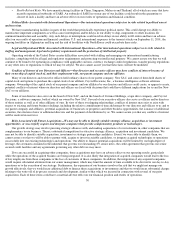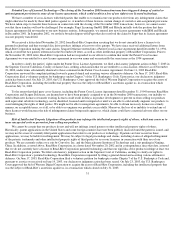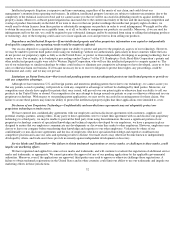Seagate 2002 Annual Report Download - page 47
Download and view the complete annual report
Please find page 47 of the 2002 Seagate annual report below. You can navigate through the pages in the report by either clicking on the pages listed below, or by using the keyword search tool below to find specific information within the annual report.
Risk Factors
Risks Related to Our Business
Competition—Our industry is highly competitive and our products have experienced significant price erosion.
Even during periods when demand is stable, the rigid disc drive industry is intensely competitive and vendors typically experience
substantial price erosion over the life of a product. Our competitors have historically offered existing products at lower prices as part of a
strategy to gain or retain market share and customers, and we expect these practices to continue. We may need to reduce our prices to retain our
market share, which could adversely affect our results of operations. Based on our recent experience in the industry with respect to new product
introductions, we believe that the rate of increase in areal density, or the storage capacity per square inch on a disc, is slowing from its previous
levels. This trend may contribute to increased average price erosion to the extent that historical price erosion patterns continue, product life
cycles are lengthened and we are unable to offset these factors with new product introductions at higher average prices. As a result, our results
of operations could be adversely affected.
Moreover, a significant portion of our success over the past two fiscal years is a result of increasing our market share at the expense of
our competitors. Our current market share may be negatively affected by our customers’ preference to diversify their sources of supply or if
they decide to meet their requirements by manufacturing rigid disc drives themselves, particularly in the enterprise sector. Any significant
increase in market share by one of our competitors would likely result in a decline in our market share, which could adversely affect our results
of operations.
Principal Competitors—We compete with both captive manufacturers, who do not depend solely on sales of rigid disc drives to
maintain their profitability, and independent manufacturers, whose primary focus is producing technologically advanced rigid disc drives.
We have experienced and expect to continue to experience intense competition from a number of domestic and foreign companies,
including other independent rigid disc drive manufacturers and large captive manufacturers such as:
The term “independent” in this context refers to manufacturers that primarily produce rigid disc drives as a stand-alone product, and the term
“captive” refers to rigid disc drive manufacturers that produce complete computer or other systems that contain rigid disc drives or other
information storage products. Captive manufacturers are formidable competitors because they have the ability to determine pricing for
complete systems without regard to the margins on individual components. Because components other than rigid disc drives generally
contribute a greater portion of the operating margin on a complete computer system than do rigid disc drives, captive manufacturers do not
necessarily need to realize a profit on the rigid disc drives included in a computer system and, as a result, may be willing to sell rigid disc
drives to third parties at very low margins. Many captive manufacturers are also formidable competitors because they have more substantial
resources than we do. To the extent we are not successful competing with captive or independent rigid disc drive manufacturers, our results of
operations will be adversely affected.
In addition, in response to customer demand for high-quality, high-volume and low-cost rigid disc drives, manufacturers of rigid disc
drives have had to develop large, in some cases global, production facilities with highly developed technological capabilities and internal
controls. The development of large production facilities and industry consolidation can contribute to the intensification of competition. We also
face indirect competition from present and potential customers who evaluate from time to time whether to manufacture their own rigid disc
drives or other information storage products.
42
Captive
Independent
Fujitsu Limited
Maxtor Corporation
Hitachi Global Storage Technologies
Western Digital Corporation
Samsung Electronics Incorporated
Toshiba Corporation


